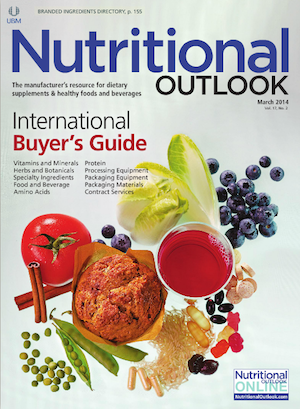Dietary Supplements: It’s Bioavailability, Stupid
Comparing bioavailability data isn't as simple as it seems.
Bioavailability is a big seller. Shoppers “get” it. They understand why a more absorbable nutrient is better. But bioavailability, as discussed in industry circles and by Nutritional Outlook in the past, is only a glimpse of an ingredient’s potential.
As N. Kalyanam, PhD, Sabinsa Corp.’s president of R&D, eloquently states: “Bioavailability is only a path, and not the destination.” Why? Because bioavailability doesn’t ensure a health benefit. Efficacy studies, and not absorption studies, prove that an ingredient benefits health. So, while bioavailability studies are valuable and informative, efficacy studies carry the most weight.
Two new curcumin bioavailability studies made headlines in January. One study compared Frutarom’s curcumin micelle to micronized curcumin and native curcumin powder; the other compared OmniActive Health Technologies’ new CurcuWin ingredient, which utilizes a water-soluble carrier, to curcuminoids combined with turmeric volatile oils and unformulated, standard curcumin. Both companies’ ingredients triumphed.
OmniActive calls the CurcuWin study unique in providing a true “apples to apples” comparison, pitting bioavailable curcumin ingredients against each other instead of just against standard curcumin. While this is commendable, it also made me wonder whether we-industry members, researchers, and media alike-do enough to help consumers contextualize bioavailability data. Or, do we simply throw data at the shopper and see what sticks?
Is there a way to stack up all existing curcumin bioavailability comparative data and tell consumers, without bias, what they really want to know: Which is the most bioavailable ingredient of them all?
We can’t, because comparing data across studies is more difficult than it seems. “The only way to objectively compare bioavailable ingredients against each other is in a single trial subjecting each ingredient to the same standards,” says Lynda Doyle, OmniActive’s vice president, global marketing, adding that this is just what the CurcuWin study did, albeit for just a few ingredients.
“Because of the variability between study designs and parameters, it is difficult to make any direct comparison between the enhanced bioavailable ingredients across studies,” she continues. Think of all the variables that could skew results, including whether subjects consumed dietary fat, which would aid the absorption of oil-soluble curcuminoids. The list goes on.
“The strict comparison between different studies is really not valid,” says Sabinsa’s Kalyanam. “The choice of subjects is also important. A study done on a young population will yield a different result from a study on older subjects. The comparison becomes still more complex depending on liver health of the subjects, since liver metabolizes xenobiotics extensively. Hence, a single study should compare all the ingredients on the same set of carefully selected subjects.”
Also, not all studies are high quality, says Wouter Haazen, product manager, Frutarom Health. For instance, some lack double blinding, placebo control, or a sufficient number of healthy subjects. And not all provide data for the area under the curve, for 24 hours, like Frutarom’s study did.
Also, for what it’s worth, it’s possible that bioavailability studies don’t always look at what they need to, says Kalyanam. For instance, he says, most of today’s curcumin bioavailability studies measure the metabolites of curcumin-mainly curcumin glucuronides. But, as mentioned earlier in regard to efficacy studies, research would need to show that these metabolites are responsible for any of curcumin’s health benefits. He says that, so far, research shows that the metabolite tetrahydrocurcuminoids, such as in Sabinsa’s new Curcumin C3 Reduct ingredient, do have health benefits.
“If a study were able to be structured so that all comparable products were delivering the same amount of bioactive material (e.g., tetrahydrocurcuminoids) and that a heterogeneous subject pool was used, one could get a better view of if there were any superior bioavailability between the products,” says Douglas Kalman, PhD, director BD, nutrition and applied clinical trials, Miami Research Associates.
So maybe there isn’t an easy way to compare bioavailability data. Maybe, then, we should bring consumers into the conversation once we have efficacy data to present. Consumers may not understand the nuances of bioavailability data, but most consumers would understand these words from a marketer: “Yes, this works for this health condition. This study showed it.”
Jennifer Grebow
Editor-in-Chief
Nutritional Outlook magazine jennifer.grebow@ubm.com

The Nutritional Outlook Podcast Episode 39: Nutritional Outlook's Ingredients to Watch in 2025
February 25th 2025In this episode, Nutritional Outlook interviews Scott Dicker, market insights director from market researcher SPINS, about ingredients and product categories nutraceutical and nutrition product manufacturers should watch in 2025.



















